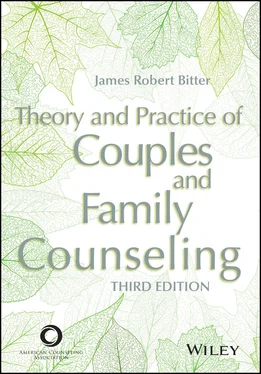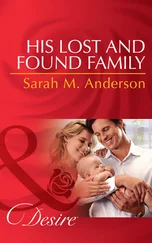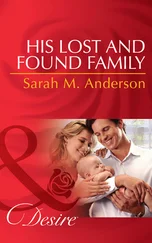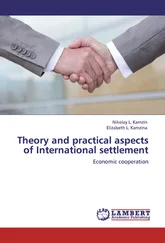James Robert Bitter - Theory and Practice of Couples and Family Counseling
Здесь есть возможность читать онлайн «James Robert Bitter - Theory and Practice of Couples and Family Counseling» — ознакомительный отрывок электронной книги совершенно бесплатно, а после прочтения отрывка купить полную версию. В некоторых случаях можно слушать аудио, скачать через торрент в формате fb2 и присутствует краткое содержание. Жанр: unrecognised, на английском языке. Описание произведения, (предисловие) а так же отзывы посетителей доступны на портале библиотеки ЛибКат.
- Название:Theory and Practice of Couples and Family Counseling
- Автор:
- Жанр:
- Год:неизвестен
- ISBN:нет данных
- Рейтинг книги:5 / 5. Голосов: 1
-
Избранное:Добавить в избранное
- Отзывы:
-
Ваша оценка:
- 100
- 1
- 2
- 3
- 4
- 5
Theory and Practice of Couples and Family Counseling: краткое содержание, описание и аннотация
Предлагаем к чтению аннотацию, описание, краткое содержание или предисловие (зависит от того, что написал сам автор книги «Theory and Practice of Couples and Family Counseling»). Если вы не нашли необходимую информацию о книге — напишите в комментариях, мы постараемся отыскать её.
Theory and Practice of Couples and Family Counseling — читать онлайн ознакомительный отрывок
Ниже представлен текст книги, разбитый по страницам. Система сохранения места последней прочитанной страницы, позволяет с удобством читать онлайн бесплатно книгу «Theory and Practice of Couples and Family Counseling», без необходимости каждый раз заново искать на чём Вы остановились. Поставьте закладку, и сможете в любой момент перейти на страницу, на которой закончили чтение.
Интервал:
Закладка:
ABOUT THE AUTHOR
James Robert (Jim) Bitter, EdD,is professor of counseling and human services at East Tennessee State University in Johnson City. He is a nationally certified counselor, an Adlerian family counselor, and a former officer of the North American Society of Adlerian Psychology. He is also a former editor of the Journal of Individual Psychology and a Diplomate in Adlerian Psychology. He is a reviewer for the American Journal of Family Therapy and has served in the past in a similar role for The Family Journal and the Journal of Counseling & Development . He received his doctorate in counselor education from Idaho State University in Pocatello in 1975.
Jim has received awards for outstanding teaching in the College of Human Development and Community Service at California State University, Fullerton, and for outstanding scholarship in the Clemmer College of Education at East Tennessee State University. In 2015, Jim won the American Counseling Association’s Don Dinkmeyer Social Interest Award. He has taught in graduate counseling programs in three universities and has authored or coauthored four books as well as more than 60 articles and chapters.
Jim is the featured expert on Adlerian family therapy in the Allyn & Bacon/Psychotherapy.net series Family Therapy With the Experts, and he has offered workshops in Canada, England, Greece, Ireland, South Korea, New Zealand, and Peru as well as throughout the United States. He was introduced to Adlerian family counseling by Manford A. Sonstegard, with whom he worked for more than 30 years.
Jim studied and worked for 10 years with one of the pioneers of family therapy, Virginia Satir. He was a trainer in her Process communities for three of those years and published an article and a number of chapters with her before her death in 1989. He is a past president of AVANTA, Satir’s training network.
Jim currently sees couples and families together with graduate students at East Tennessee State University’s community counseling clinic. He continues to develop Adlerian counseling models for individuals, groups, couples, and families. His focus on a fully present relationship in all forms of counseling is an integration of Adlerian counseling and the work of Virginia Satir, Erv and Miriam Polster, and Michael White, all of whom have trained Jim in the past.
Jim has been married to Lynn Williams for 37 years; they have two grown daughters, Alison and Nora Williams. In his leisure time, Jim likes to travel, collect stamps, play basketball, and read.
ACKNOWLEDGMENTS
No one writes a textbook like this without a lot of help, and I have had wonderful support from the very beginning, starting with Carolyn Baker, Nancy Driver, and the rest of the team at the American Counseling Association. Special thanks to Beth Ciha for copyediting the project, and also to my daughter, Alison Williams, who carefully proofread every page of this book. In many ways, this is the third edition of a textbook I wrote back in 2009. Sherry Cormier served as a developmental editor, friend, and confidant for that first edition. Her wisdom is still in every chapter. And of course, this book would never have been started without the kindness, support, and constant encouragement of Jerry Corey.
Special thanks are extended to the chapter reviewers who provided consultation and detailed critiques. Their recommendations have been incorporated into this text:
Chapters 1– 4: Gerald and Marianne Corey
Chapter 4: David Kleist and I cowrote the original chapter, and Mark Young updated and improved it
Chapter 5: Jill Scharff
Chapter 6: Jon Carlson (now deceased and much missed) and Richard E. Watts
Chapter 7: Betty Carter and Monica McGoldrick
Chapter 8: Jean McLendon and John Banmen
Chapter 9: Harry Aponte
Chapter 10: Madeleine Richeport-Haley
Chapter 11: Jane Peller
Chapter 12: Don Bubenzer and John West; and J. Graham Disque
Chapter 13: Roberta Nutt and Patricia E. Robertson
Chapter 14: Frank Dattilio
Chapter 15: Rob Freund and Jon Sperry
Chapter 16: Brent Morrow
Chapter 17: Harville Hendrix
Chapter 18: Gerald and Marianne Corey
I also want to thank the students in the couples and family counseling concentration of the Counseling Program at East Tennessee State University who gave this text an initial trial run and offered many helpful additions and corrections.
To each and every person who contributed to the completion of this book, my heartfelt thanks.

PART 1 Basic Issues in the Practice of Couples and Family Counseling
CHAPTER 1 Introduction and Overview
CHAPTER 2 Genograms of Couples and Family Counseling
CHAPTER 3 The Couples and Family Practitioner as Person and Professional
CHAPTER 4 Virtue, Ethics, and Legality in Couples and Family Practice
• • •

CHAPTER 1
Introduction and Overview
Fifty years ago, family practice promised greater effectiveness than had been achieved with either individual or group counseling. Because these relational approaches sought to change the very systems in which individuals actually lived, many professionals hoped that the changes enacted would endure and that both individual and system relapse would disappear. Although these hopes have not been fully realized, family practice has had enormous success, and it is now a fully integrated part of most treatment programs.
Couples and family practice is fundamentally different from individual counseling. Although both couples and family systems share some similarities with groups, their intimacy and intensity make them a treatment unit unlike any other. Perhaps the hardest task for those trained to work with individuals is learning assessment and interventions with couples and families from multiple systemic perspectives. I will say more about this later. In the meantime, this book provides you with an invitation to experience the thinking of the pioneers and leaders who have shaped systemic approaches in the field of couples and family practice.
This book surveys 13 approaches to family counseling and practice, highlighting key concepts, therapy goals, techniques, process, and application. Two additional chapters that were part of an earlier edition of this book have been updated and are available on my website ( www.jamesrobertbitter.com). These chapters are on symbolic-experiential family therapy (Carl Whitaker’s model) and effective approaches to parenting. I hope you will read this book with the goal of learning the breadth and depth of each counseling orientation. The models presented here sometimes have a great deal of similarity and sometimes are quite different and even contradict one another. Consider not only the ideas and interventions of each model but also the worldview espoused by both the founders of the theory and the practitioners who currently contribute to its development.
Each of these models will, most likely, have some relevance to your own family of origin. The family of origin is often a good place to start the personal exploration that is so essential to couples and family practice. It is almost axiomatic these days that family practitioners-in-training must consider the impact that their families of origin have had on their personal development (see McGoldrick, 2011a). If we do not make this journey into our own histories, we are in danger of trying to work out our personal family issues with every new family we encounter.
Читать дальшеИнтервал:
Закладка:
Похожие книги на «Theory and Practice of Couples and Family Counseling»
Представляем Вашему вниманию похожие книги на «Theory and Practice of Couples and Family Counseling» списком для выбора. Мы отобрали схожую по названию и смыслу литературу в надежде предоставить читателям больше вариантов отыскать новые, интересные, ещё непрочитанные произведения.
Обсуждение, отзывы о книге «Theory and Practice of Couples and Family Counseling» и просто собственные мнения читателей. Оставьте ваши комментарии, напишите, что Вы думаете о произведении, его смысле или главных героях. Укажите что конкретно понравилось, а что нет, и почему Вы так считаете.












